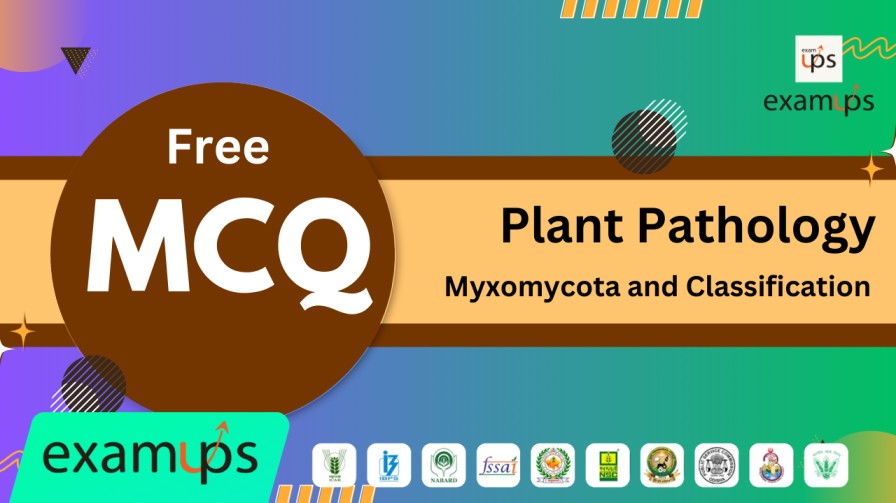MCQs on Taxonomy and Nomenclature
- The naming of organisms is governed by:
a) International Code of Plant Pathology
b) International Code of Botanical Nomenclature
c) International Fungal Taxonomy Code
d) International System of Zoological Nomenclature
Answer: b - In binomial nomenclature, the first letter of the genus should be:
a) Lowercase
b) Uppercase
c) Italicized only
d) Bold
Answer: b - What should be done to binomials when written?
a) They should always be underlined.
b) They should always be italicized.
c) They should be underlined or italicized.
d) They should be written in bold letters.
Answer: c - In binomial nomenclature, the species name is typically:
a) A noun
b) An adjective
c) A verb
d) A phrase
Answer: b - Which of the following represents the correct hierarchy for fungi classification?
a) Order → Class → Family → Genus
b) Class → Order → Family → Genus
c) Division → Subdivision → Order → Class
d) Family → Order → Class → Division
Answer: b
MCQs on Fungal Classification
- Fungi belong to the Kingdom:
a) Plantae
b) Protista
c) Fungi
d) Animalia
Answer: c - In the classification of fungi, what comes immediately after “Division”?
a) Subdivision
b) Class
c) Family
d) Order
Answer: a - The family name for Puccinia graminis is:
a) Basidiomycotina
b) Pucciniaceae
c) Uredinales
d) Teliomycetes
Answer: b - The correct binomial name of a fungus species is:
a) Puccinia graminis
b) Puccinia Graminis
c) puccinia graminis
d) Puccinia Graminis Italicized
Answer: a - The class Teliomycetes belongs to the subdivision:
a) Zygomycotina
b) Ascomycotina
c) Basidiomycotina
d) Deuteromycotina
Answer: c
MCQs on Mycota Divisions
- Which division of Mycota includes organisms with plasmodium or pseudoplasmodium?
a) Eumycota
b) Basidiomycotina
c) Myxomycota
d) Zygomycotina
Answer: c - Which division of Mycota has an assimilative phase that is filamentous?
a) Eumycota
b) Myxomycota
c) Deuteromycotina
d) Mastigomycotina
Answer: a - The class Plasmodiophoromycetes belongs to which division?
a) Myxomycota
b) Eumycota
c) Ascomycotina
d) Basidiomycotina
Answer: a
MCQs on Subdivisions of Eumycota
- Which subdivision of Eumycota includes fungi with zoospores?
a) Zygomycotina
b) Mastigomycotina
c) Ascomycotina
d) Deuteromycotina
Answer: b - Which type of sexual spore is characteristic of Zygomycotina?
a) Zygospores
b) Ascospores
c) Basidiospores
d) None of the above
Answer: a - The subdivision Ascomycotina is identified by the presence of:
a) Basidiospores
b) Zygospores
c) Ascospores
d) Zoospores
Answer: c - Fungi in Basidiomycotina produce:
a) Basidiospores
b) Ascospores
c) Oospores
d) Zoospores
Answer: a - The subdivision Deuteromycotina is characterized by:
a) Sexual spores not seen
b) Presence of zoospores
c) Presence of ascospores
d) None of the above
Answer: a
MCQs on Practical Aspects of Classification
- Who proposed the classification system mentioned in the text?
a) G.C. Ainsworth
b) Charles Darwin
c) Linnaeus
d) F.K. Sparrow
Answer: a - What is the key identifying feature of Myxomycota?
a) Filamentous structure
b) Presence of plasmodium
c) Absence of zoospores
d) Production of basidiospores
Answer: b
MCQs on Genera and Families
- The genus Puccinia belongs to which family?
a) Uredinales
b) Pucciniaceae
c) Basidiomycotina
d) Teliomycetes
Answer: b - Which order does Puccinia belong to?
a) Uredinales
b) Teliomycetes
c) Pucciniaceae
d) Zygomycotina
Answer: a - The subdivision Basidiomycotina includes the class:
a) Plasmodiophoromycetes
b) Teliomycetes
c) Ascomycotina
d) Mastigomycotina
Answer: b
MCQs on Terminology and Practice
- The term “Eumycota” refers to:
a) True fungi
b) Slime molds
c) Algae
d) None of the above
Answer: a - Which of these terms is associated with fungal taxonomy?
a) Phylum
b) Subdivision
c) Division
d) Both b and c
Answer: d - Sexual spores typical of Mastigomycotina are called:
a) Ascospores
b) Basidiospores
c) Oospores
d) Zygospores
Answer: c - “Motile cells absent” is a feature of:
a) Mastigomycotina
b) Eumycota
c) Zygomycotina
d) None of the above
Answer: c
MCQs on Binomial Examples
- In the name “Puccinia graminis,” “Puccinia” refers to:
a) Family
b) Genus
c) Species
d) Division
Answer: b - In the hierarchy of fungal classification, a class falls under:
a) Division
b) Subdivision
c) Family
d) Order
Answer: b - A perfect state is observed in which subdivision?
a) Zygomycotina
b) Deuteromycotina
c) Basidiomycotina
d) Mastigomycotina
Answer: a










